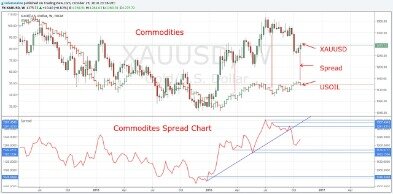
Another valuable indicator to see what does sentiment mean in stocks is the high-low index. This compares the number of stocks hitting 52-week highs to the number hitting 52-week lows in a given index like the S&P 500 or Nasdaq. An index under 30 signifies a bearish sentiment, while 70 or above indicates investors are feeling more bullish. Additionally, contrarian https://forex-world.net/brokers/mahifx-upcoming-past-events/ investors may analyze the current market sentiment and make their trades in the opposite direction of the overwhelming consensus. For instance, if the investor sentiment around a specific security is bearish, contrarians will buy the equity instead. So what is sentiment in stocks, and how does investor sentiment dictate what occurs in the markets?
- Otherwise, it would be a full-time job to track all of these indicators–which nobody has the time for.
- Herd behavior is thus inevitably linked to market sentiment and may allow for irrational enthusiasm, which is often manifested in the form of inefficient prices and bubbles.
- Let’s consider the S&P 500 index, a common index used to measure the overall performance of the U.S. stock market.
We are not market timers, nor are we bearish on the longer-term performance of the stock market. Market sentiment becomes increasingly important to learn about with the rise of investing fueled by social media trends or meme stocks. The “golden cross” occurs when the 50-day simple moving average (SMA) crosses above the 200-day simple moving average (SMA). This suggests that momentum has switched upward, producing bullish emotion. On the other hand, a “death cross” occurs when the 50-day simple moving average (SMA) falls below the 200-day simple moving average (SMA). This indicates a downward trend in prices and contributes to a pessimistic outlook.
Motley Fool Investing Philosophy
Volume spikes, where volume suddenly increases by 2 or more times the previous average, may indicate important news about a company or security, so it would be prudent to check the news. When price moves are based on important news, then a new trend may be forming or the current trend may be enhanced and prolonged. Since market sentiment is the sentiment of the masses, it makes sense that tracking volume could be useful in divining market sentiment or the sentiment about a particular security. One sensible way of tracking sentiment is by noting the volume on uptrends or downtrends. Option prices are the primary motivating factor behind the VIX(CBOE, Chicago Board of Options Exchange Volatility Index ), commonly known as the fear index.

This measure includes emerging debt and equities, market currencies, small capital stocks, and junk or high yield bonds. As stocks rise, stockholders become overjoyed as their wealth increases, which causes them to buy even more. They tell their friends, show them their portfolios, and talk about what they will do with their newly found wealth. When they invest, they bid stock prices ever higher, and as it rises higher, even more people pile in. Both the greed for more money and the FOMO drives prices far higher than can be justified by the fundamentals of the underlying businesses.
Investor Sentiment in the Stock Market
For example, at times, the sentiment will be positive especially when things are going on well. At times, sentiment in the market will be negative, especially when there are potential risks in the market. It refers to the overall attitude among investors and traders about the overall market or a particular https://currency-trading.org/education/camarilla-pivots-indicator/ asset. It is this market psychology that forms the basis of contrarian investing — selling when the masses are buying and buying when they are selling. Contrarian investing could not exist if the efficient market hypothesis were true, since prices would only be determined by fundamentals.
Sentiment indicators can be used by investors to see how optimistic or pessimistic people are about the current market or economic conditions. For example, a consumer sentiment indicator, such as the Michigan Consumer Sentiment report, shows pessimism may make companies less likely to stock up on inventory, because they may fear that consumers will not spend. The bullish percent index, often known as BPI, is a measurement that determines the number of stocks with bullish patterns using point and figures charts. When the BPI provides a rating of 80% or greater, investor confidence is exceedingly positive, and there is a good chance that equities have been overbought. Similar to how a reading of 20% or below suggests an oversold marketplace, a reading of 30% or above shows bullish market sentiment. The high-low index is calculated by contrasting the number of equities that have reached new 52-week highs with the number of stocks that have reached new 52-week lows.
Currency markets
The S&P 500 dropped from 3,380 on Feb. 14, 2020, to a low of 2,304.92 on March 20, 2020, which is when the COVID-19 pandemic really got going. Businesses were closing, there were shortages everywhere, and investors were taken over by fear. Since the sentiment was bearish, this led to an incredible drop in a little more than a month. Of course, nothing trends in the same direction forever, so if you can gauge the sentiment of traders, you may be able to pinpoint when the trend will turn. The edge enjoyed by any one model will only exist as long as few other market participants are unaware of it. Individual traders may be able to maintain an edge if their model identifies edges that are not viable for larger players.
How else to explain the stock market bubble of the 1990’s or the real estate bubble that followed a few years afterward? Although fundamental factors do ultimately rein in excess confidence or pessimism, greed and fear of the uninformed investors have a large effect on prices most of the time. The High-Low Index is a comparison of the number of stocks https://trading-market.org/broker-definition-and-example/ that make up 52-week highs as opposed to the number of stocks making 52-week lows. When the index is high, it is considered to be an indicator of bullish market sentiment and vice versa. The most common reading of market sentiments is trading in tandem with prevailing market sentiments, which is an effective strategy for long-term investors.
What Do Sentiment Indicators Tell You?
It seems investors are as optimistic (bullish) as they’ve been since November 2021. Market sentiment and fundamental analysis are both ways for investors to understand the pulse of the market better, but they are two very different approaches to learning about where the market is headed. Investors often view this indicator as the “fear index” because it spikes when investors purchase a significant amount of put options to protect their portfolios.
Later, the S&P rebounded to reach its February high by mid-August and breached 3,700 by the end of the year. It did this despite small businesses declaring bankruptcy in droves and big companies across the U.S. reporting bad earnings numbers. Investor sentiment has had a heavy impact on the market in the recent past.
The simple moving average gives the overall price movement of a given security or stock index over a particular period of time. A 50-day or 200-day simple moving average is a common indicator or market sentiment. However, herd instinct doesn’t always make for a good investment strategy. There are also investors who trade against prevailing market sentiments. In times of extreme pessimism, they look for beaten-down stocks, which come with strong fundamentals and offer immense growth potential in the future but are available at a bargain price.
